Asia is a vast and diverse continent that offers a unique blend of ancient traditions and modern innovations. It is home to some of the world’s oldest civilizations, a fascinating mix of cultures, and a treasure trove of natural wonders that will leave you in awe. From towering skyscrapers to ancient temples, Asia has it all. Here are 10 compelling reasons to visit this amazing continent.
Rich Cultural Heritage
Asia is home to some of the world’s oldest civilizations, each with its unique culture, traditions, and beliefs. From the Great Wall of China to the ancient temples of Kyoto, Asia’s cultural heritage is unparalleled. Whether you’re a history buff or simply interested in learning about different cultures, Asia has something for everyone.
Delicious Cuisine
Asia is famous for its delicious and diverse cuisine, from spicy Thai curries to savoury Chinese dumplings. Each country has its unique flavours and ingredients, making it a paradise for foodies. Whether you’re looking to sample street food or dine in Michelin-starred restaurants, Asia has something to satisfy every palate.
Breathtaking Natural Scenery
Asia boasts some of the world’s most stunning natural landscapes, from the snow-capped peaks of the Himalayas to the turquoise waters of the Maldives. Whether you’re looking to explore the lush rainforests of Borneo or hike through the rugged terrain of Nepal, Asia is a nature lover’s paradise.
Diverse Wildlife
Asia is home to some of the world’s most fascinating wildlife, from giant pandas in China to tigers in India. Whether you’re interested in spotting rare species or simply want to immerse yourself in nature, Asia has plenty of opportunities for wildlife enthusiasts.
World-Class Beaches
Asia is home to some of the world’s most beautiful beaches, from the white sands of Thailand to the crystal clear waters of Bali. Whether you’re looking to relax on the beach or try your hand at water sports, Asia’s beaches are sure to impress.
Adventure Sports
Asia offers plenty of opportunities for adventure sports, from trekking in the Himalayas to surfing in Bali. Whether you’re a seasoned adrenaline junkie or simply looking to try something new, Asia has something to offer.
Shopping Paradise
Asia is a shopper’s paradise, with bustling markets and high-end shopping malls in every major city. Whether you’re looking for designer clothes or unique souvenirs, Asia’s shopping scene has it all.
Friendly Locals
Asia is known for its warm and hospitable people, who will welcome you with open arms. From the bustling streets of Bangkok to the tranquil villages of Bali, you’ll find friendly locals wherever you go.
Affordable Travel
Asia is one of the most affordable travel destinations in the world, with plenty of budget-friendly accommodation, food, and activities. Whether you’re a backpacker on a shoestring budget or a luxury traveller looking for a bargain, Asia has plenty of options.
Vibrant Nightlife
Asia’s cities come alive at night, with plenty of bars, clubs, and entertainment venues to choose from. Whether you’re looking to party the night away in Bangkok or enjoy a quiet drink in Tokyo, Asia’s nightlife is sure to impress.
In conclusion, Asia is a continent that offers a wealth of experiences for travellers of all interests and budgets. From its rich cultural heritage to its stunning natural landscapes, there are countless reasons to visit this magical part of the world. Whether you’re looking to explore ancient temples, indulge in delicious cuisine, or simply soak up the friendly local culture, Asia has something for everyone. With affordable travel options and endless opportunities for adventure and relaxation, a trip to Asia is a journey of a lifetime. So, pack your bags and get ready to discover the allure of Asia – you won’t be disappointed!
The geography of Asia
Asia is the largest continent on Earth, covering approximately 30% of the world’s land area. It is bordered by the Pacific Ocean to the east, the Arctic Ocean to the north, the Indian Ocean to the south, and Europe and Africa to the west.
The continent is home to a diverse range of landscapes and geographic features. In the east, the continent is dominated by mountain ranges, including the Himalayas, which are home to the highest peak on Earth, Mount Everest. To the southeast, there are extensive coastal plains and river deltas, including the Mekong and the Ganges-Brahmaputra.
Central Asia is dominated by deserts, including the Gobi Desert and the Taklamakan Desert, which are some of the driest and most inhospitable regions on Earth. To the west, the continent is home to vast grasslands, including the steppes of Kazakhstan and Mongolia.
The continent also features a wide range of bodies of water, including the Caspian Sea, the largest inland body of water in the world, and the Aral Sea, which has been greatly reduced in size due to water diversion for agriculture. Major rivers include the Yangtze, the Mekong, and the Indus.
Asia is also home to a number of important bodies of water, including the Red Sea, the Persian Gulf, and the Sea of Japan. The continent is rich in natural resources, including oil, gas, coal, and minerals, and is home to some of the world’s most populous and rapidly developing countries, including China, India, and Indonesia.
Central asia
Central Asia is a region located in the heart of the Asian continent, comprising five countries: Kazakhstan, Kyrgyzstan, Uzbekistan, Tajikistan, and Turkmenistan. This region is characterised by its vast and diverse landscapes, from the rugged mountains of the Tian Shan and Pamir ranges, to the vast steppes and deserts.
The region has a rich history and cultural heritage, influenced by various empires, including the Persian, Mongol, and Soviet empires. Today, Central Asia is known for its unique blend of traditional and modern cultures, and for being a crossroads of trade and culture between Europe and Asia.
The region is also rich in natural resources, including oil, gas, gold, and other minerals. Kazakhstan is the largest economy in the region, while Uzbekistan is the most populous country. The region is also home to a number of important cities, including Almaty, Bishkek, Tashkent, Dushanbe, and Ashgabat.
Central Asia is also known for its nomadic heritage, with many people in the region still practising a traditional way of life. The yurt, a portable tent-like dwelling, is a common sight across the region, and traditional games such as kok-boru (a type of horseback polo) and buzkashi (a game played with a goat carcass) are still played in some areas.
The region is also home to a number of important historical and cultural sites, including the ancient cities of Samarkand, Bukhara, and Khiva in Uzbekistan, and the ruins of the ancient city of Merv in Turkmenistan. These sites reflect the region’s rich history and cultural diversity, and attract visitors from around the world.
South East Asia
Southeast Asia is a subregion of Asia, consisting of 11 countries: Brunei, Cambodia, Indonesia, Laos, Malaysia, Myanmar, the Philippines, Singapore, Thailand, Timor-Leste (East Timor), and Vietnam. The region is located between the Indian Ocean to the west and the Pacific Ocean to the east, and is known for its tropical climate, diverse cultures, and stunning natural landscapes.
The region is home to some of the world’s most popular tourist destinations, including Bali in Indonesia, Phuket in Thailand, and Halong Bay in Vietnam. Its beautiful beaches, ancient temples, and vibrant cities make it a popular destination for travellers from all over the world.
Southeast Asia is also home to a rich and diverse range of cultures, influenced by various ethnic groups, religions, and historical events. Buddhism, Islam, and Hinduism are some of the most widely practised religions in the region. The region is also known for its delicious and diverse cuisine, including dishes such as pho from Vietnam, nasi goreng from Indonesia, and tom yum from Thailand.
The region is also rich in natural resources, including oil, gas, and minerals. It is also home to some of the world’s most important waterways, including the Mekong River, which flows through several countries in the region.
The region has a turbulent history, with colonialism, wars, and political turmoil shaping its development. Today, many of the countries in the region are rapidly developing, with growing economies and a young and educated population.
Southeast Asia is a diverse and fascinating region, with something to offer for every type of traveller. Whether you’re looking to explore ancient temples, relax on a beautiful beach, or sample delicious cuisine, Southeast Asia is sure to leave you with unforgettable memories.
Far East Asia
Far East Asia is a subregion of Asia, which comprises three countries – China, Japan, and Korea. The region is located in the eastern part of the continent, bordered by the Pacific Ocean to the east and Russia to the north.
Far East Asia is known for its rich history, unique cultures, and stunning natural landscapes. The region is home to some of the world’s oldest civilizations, and has been the birthplace of many important technological, philosophical, and artistic developments.
China is the largest country in the region, and is known for its vast and diverse landscapes, from the towering Himalayas to the sprawling deserts of the north. Japan is a modern and vibrant country, known for its cutting-edge technology, exquisite cuisine, and unique culture. Korea is divided into two countries – North Korea and South Korea – and is known for its rich history, delicious cuisine, and stunning natural scenery.
Far East Asia is also known for its bustling cities, including Beijing, Shanghai, Tokyo, Seoul, and Hong Kong. These cities are home to some of the world’s tallest skyscrapers, and are centres of culture, commerce, and innovation.
The region is also home to a rich and diverse range of religions and philosophies, including Confucianism, Taoism, Buddhism, and Shintoism. Many of these beliefs have influenced the region’s art, literature, and architecture, creating a unique cultural heritage.
Far East Asia is a popular tourist destination, attracting millions of visitors every year. Whether you’re interested in exploring ancient temples, indulging in delicious cuisine, or simply immersing yourself in a fascinating and diverse culture, Far East Asia is sure to leave you with unforgettable memories.
Are Siberia and Kamchatka considered to be part of Asia?
Yes, Siberia and Kamchatka are considered to be part of Asia. Siberia is a vast region of Russia, located in the northern part of the country and extending eastward towards the Pacific Ocean. It covers a huge area and includes many different ecosystems, from tundra and taiga forests to mountain ranges and deserts. Siberia is bordered by the Arctic Ocean to the north, the Ural Mountains to the west, and Mongolia and China to the south.
Kamchatka is a peninsula located in the far east of Russia, also bordering the Pacific Ocean. It is a remote and rugged region, known for its volcanic landscapes, hot springs, and abundant wildlife. Kamchatka is separated from the Russian mainland by the Sea of Okhotsk, and is situated near the Aleutian Islands of Alaska.
Both Siberia and Kamchatka are part of the larger Asian continent and are considered to be part of Russia’s Asian territory. However, due to their remote locations and unique characteristics, they have distinct cultural, economic, and geographic features that set them apart from other regions of Asia.
The History of Asia
The history of Asia is long and rich, stretching back thousands of years. The continent is considered to be the cradle of civilization, with many of the world’s oldest and most advanced civilizations having emerged here.
Some of the earliest known human settlements in Asia date back to the Palaeolithic era, around 2.5 million years ago. Over time, a number of ancient civilizations emerged in Asia, including the Indus Valley civilization in India, the Shang dynasty in China, and the Khmer Empire in Southeast Asia.
In the centuries that followed, various empires and dynasties rose and fell across Asia. The Persian Empire, which emerged in the 6th century BCE, was one of the largest and most powerful empires in history, and influenced the development of many later civilizations, including the Islamic civilization that emerged in the 7th century.
In the centuries that followed, the Chinese, Mongol, and Ottoman empires also emerged as major powers in Asia, dominating politics, culture, and trade across the region. The rise of European colonial powers in the 16th century had a profound impact on Asia, with many countries falling under colonial rule for centuries.
The 20th century saw significant political and social upheaval across Asia, with the rise of nationalist movements and the emergence of new nations. Many countries gained independence from colonial powers, while others saw significant political and economic reforms.
Today, Asia is home to some of the world’s most populous and rapidly developing countries, including China, India, and Indonesia. The region is known for its rich cultural heritage, vibrant economies, and stunning natural landscapes, making it a fascinating and dynamic part of the world.
The Silk Road
The Silk Road was a network of trade routes that connected China to the Mediterranean world, passing through Central Asia, the Middle East, and Europe. The Silk Road was not a single road but rather a series of trade routes that crossed mountains, deserts, and rivers.
The Silk Road was named after the valuable Chinese silk, which was one of the most important goods traded along the route. However, many other goods were also exchanged, including spices, ivory, precious metals, and exotic animals. The Silk Road also facilitated the exchange of ideas, religions, and technologies, shaping the development of the societies along the route.
The Silk Road emerged in the 2nd century BCE, during the Han Dynasty in China. The route reached its height during the Tang Dynasty in the 7th century CE when the Silk Road was a major trade route for silk, tea, spices, and ceramics. Along the route, major trading cities emerged, including Kashgar, Samarkand, and Bukhara in Central Asia, and Damascus and Constantinople in the Middle East.
The Silk Road had a significant impact on the cultures and economies of the regions it passed through. It facilitated the spread of Buddhism from India to China, and of Islam from the Middle East to Central Asia. It also helped to stimulate trade and economic growth in many of the cities along the route, contributing to the growth of empires and the rise of new powers.
The decline of the Silk Road began in the 15th century with the rise of sea routes, which made trade by sea faster and cheaper. The Silk Road fell into disuse, and many of the cities that had thrived along the route began to decline. However, the Silk Road remains an important symbol of the historic connections between Asia and the rest of the world, and its legacy can still be seen in the cultures, economies, and societies of the regions it passed through.
The Diversity of Asian Cuisines
Asian cuisine is incredibly diverse, reflecting the varied cultures, climates, and ingredients found throughout the continent. From the spicy curries of India to the delicate sushi of Japan, Asian cuisine encompasses a wide range of flavours, textures, and cooking techniques.
In general, Asian cuisine tends to be characterised by the use of fresh, aromatic ingredients, such as herbs, spices, and vegetables. Rice and noodles are also staple foods in many Asian countries, and are often served alongside savoury meats, seafood, and flavorful sauces.
Some of the most popular Asian cuisines include:
- Chinese cuisine, which is known for its diverse range of dishes, from the spicy flavours of Sichuan to the sweet and sour dishes of Guangdong.
- Japanese cuisine, which emphasises fresh, seasonal ingredients and simple, elegant presentation. Sushi, sashimi, and tempura are some of the most famous Japanese dishes.
- Indian cuisine, which is famous for its use of spices and bold, complex flavours. Curries, biryanis, and tandoori dishes are all popular in Indian cuisine.
- Korean cuisine, which emphasises the use of fermented foods, such as kimchi, and the use of bold, spicy flavours. Korean BBQ, bibimbap, and fried chicken are all popular Korean dishes.
- Thai cuisine, which is known for its sweet, sour, and spicy flavours. Pad Thai, green curry, and tom yum soup are all popular Thai dishes.
Other popular Asian cuisines include Vietnamese, Indonesian, Malaysian, and Filipino cuisine, each with their own unique flavours and ingredients.
Asian Culture
Asian culture is incredibly diverse, encompassing a wide range of customs, traditions, and beliefs across the continent. Despite the many differences between Asian cultures, there are some common themes that unite them, including a strong emphasis on family, respect for elders, and a deep reverence for history and tradition.
One of the most striking features of Asian culture is its long and rich history. Many Asian countries have ancient civilizations and traditions that date back thousands of years, influencing everything from art and architecture to religion and philosophy. Some of the most famous landmarks in Asia, such as the Great Wall of China and the temples of Angkor Wat, are testaments to the continent’s rich cultural heritage.
Asian cultures also place a strong emphasis on family and community. Family is considered to be the cornerstone of society, and filial piety – the respect and reverence for one’s parents and ancestors – is a deeply held value in many Asian countries. Respect for elders is also an important value, with older people often occupying positions of authority and respect in society.
Religion plays a significant role in many Asian cultures, with a diverse range of beliefs and practices represented across the continent. Buddhism, Confucianism, Hinduism, Islam, and Taoism are just a few of the religions practised in Asia, each with their own unique traditions and beliefs.
Food is also an important part of Asian culture, with each country and region having its own unique cuisine and culinary traditions. Many Asian cuisines are known for their bold flavours, use of fresh herbs and spices, and emphasis on communal dining.
Overall, Asian culture is rich, diverse, and deeply rooted in history and tradition. From the ancient temples of Angkor Wat to the bustling streets of Tokyo, Asia is a fascinating and complex region with a unique cultural identity.
Asian Weather
The weather in Asia varies greatly across the continent, due to its vast size and diverse landscapes. Asia spans from the Arctic Circle in the north to the equator in the south, and includes a wide range of climates, from polar tundras to tropical rainforests.
In general, the climate in Asia can be divided into several regions. In the north, there is a subarctic and continental climate, with long, cold winters and short, hot summers. This includes regions like Siberia and northern China.
In the central part of Asia, there are vast deserts, including the Gobi and Taklamakan deserts, which have hot summers and cold winters, with very little rainfall throughout the year.
In the southeast, there is a tropical climate, with hot and humid conditions throughout the year, and a monsoon season from May to September. This includes regions like Indonesia, Thailand, and the Philippines.
In the south, there is a subtropical climate, with mild winters and hot summers, and a rainy season from June to September. This includes regions like southern China and Japan.
In the southwest, there is a tropical savanna climate, with hot and humid conditions throughout the year, and a rainy season from May to September. This includes regions like India and Sri Lanka.
Overall, the weather in Asia is incredibly diverse, with a wide range of climates and conditions depending on the region. Travellers should research the weather patterns of the specific areas they plan to visit and pack accordingly.
When is the best time to visit Central, South East and Far East Asia
The best time to visit Central, Southeast, and Far East Asia depends on a variety of factors, including weather, crowds, and cultural events. Here are some general guidelines for each region:
Central Asia
The best time to visit Central Asia is from May to September, when the weather is warm and dry. This is also the peak tourist season, so expect higher prices and larger crowds. In the winter, some areas of Central Asia can be very cold and snowy.
Southeast Asia
The best time to visit Southeast Asia is from November to February, when the weather is cooler and drier. This is also the peak tourist season, so expect larger crowds and higher prices. In the summer, some areas of Southeast Asia can be very hot and humid, with a high risk of monsoons.
Far East Asia:
The best time to visit Far East Asia depends on the country and region. In general, the best time to visit Japan, Korea, and northeastern China is from March to May or from September to November, when the weather is mild and comfortable. In southern China, Hong Kong, and Taiwan, the best time to visit is from October to December, when the weather is cooler and drier. In general, the summer months (June to August) can be hot and humid in many parts of Far East Asia, while the winter months (December to February) can be cold and snowy.
It’s important to note that these are general guidelines, and weather patterns can vary greatly from year to year. Be sure to research the specific weather patterns of the regions you plan to visit and pack accordingly. Additionally, consider the cultural events and festivals that may be happening during your visit, as these can greatly enhance your experience of Asia.
Is Central Asia Dangerous?
Central Asia is generally a safe region to visit, with low levels of violent crime and terrorism. However, like any region of the world, travellers should be aware of the potential risks and take appropriate precautions to ensure their safety.
One potential risk in Central Asia is petty crime, such as pickpocketing and theft. Travellers should be vigilant in crowded areas and tourist hotspots, and keep their belongings secure. It’s also a good idea to avoid carrying large amounts of cash or valuable items.
In some parts of Central Asia, there is a risk of terrorism and political instability. This is particularly true in Afghanistan and parts of Pakistan, where the security situation is more volatile. In other parts of Central Asia, such as Kazakhstan, Uzbekistan, and Kyrgyzstan, the risk of terrorism is generally low, but travellers should still be aware of the potential for political unrest and take appropriate precautions.
It’s also important to be aware of local customs and traditions when travelling in Central Asia. Dress modestly in conservative areas, and be respectful of religious and cultural practices. It’s also a good idea to learn some basic phrases in the local language, as this can help you connect with locals and navigate unfamiliar situations.
Overall, while Central Asia may have some risks, with proper planning and precautions, it can be a safe and rewarding destination for travellers.
The Most popular sites in Asia
Asia is home to a wealth of incredible natural wonders, historic landmarks, and cultural treasures. Here are some of the most popular sites to visit in Asia:
- The Great Wall of China – This ancient wall stretches over 13,000 miles through China and is a UNESCO World Heritage site.
- Angkor Wat – Located in Cambodia, this stunning temple complex was built in the 12th century and is one of the largest religious monuments in the world.
- Taj Mahal – This iconic white marble mausoleum in India is considered one of the world’s greatest architectural treasures.
- Mount Fuji – This majestic peak in Japan is a sacred site and a symbol of the country.
- The Forbidden City – This massive palace complex in Beijing, China was once the home of emperors and is now a museum.
- Bali – This Indonesian island is known for its stunning beaches, lush landscapes, and vibrant culture.
- Ha Long Bay – This stunning natural wonder in Vietnam features thousands of limestone islands and islets rising from the turquoise waters of the Gulf of Tonkin.
- Petronas Twin Towers – These iconic skyscrapers in Kuala Lumpur, Malaysia are the tallest twin towers in the world.
- Borobudur – This Buddhist temple in Indonesia is one of the largest and most impressive ancient structures in the world.
- Kyoto – This Japanese city is known for its beautiful temples, gardens, and historic streets, making it a must-visit destination for cultural enthusiasts.
These are just a few of the many amazing sites to visit in Asia, and there are many more waiting to be discovered.
-
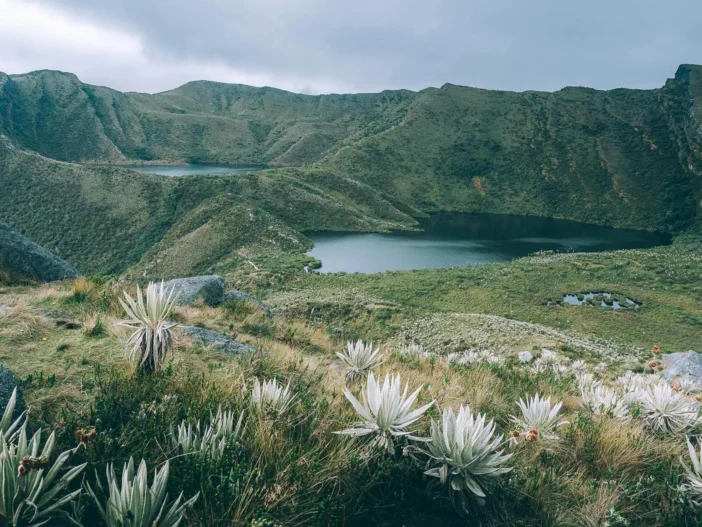
Travel Guide for Digital Nomads: Chingaza National Park
-
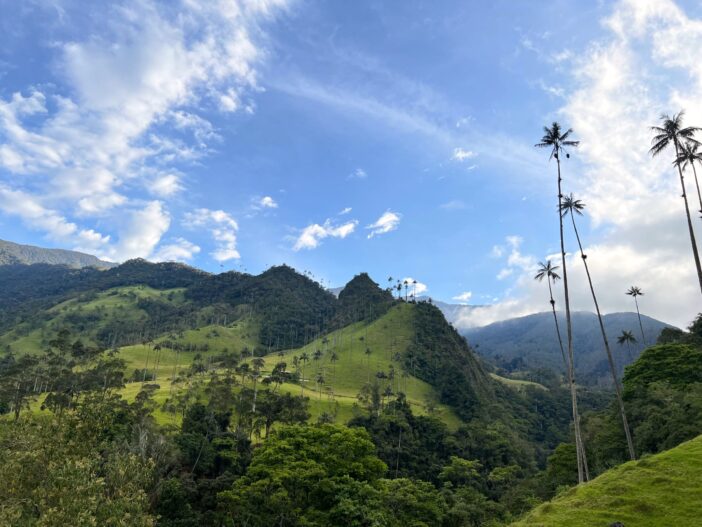
Hiking Through Colombia: A Journey into Nature’s Splendor
-
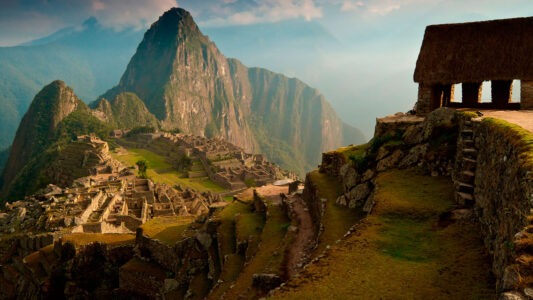
Unveiling the Epic South American Pan American Highway Road Trip Adventure
-

Unveiling Lamanai: A Digital Nomad’s Paradise in Belize
-
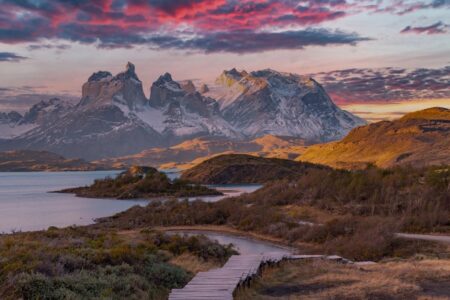
Top 10 Hiking Trails in Patagonia: Explore Unmatched Beauty
-
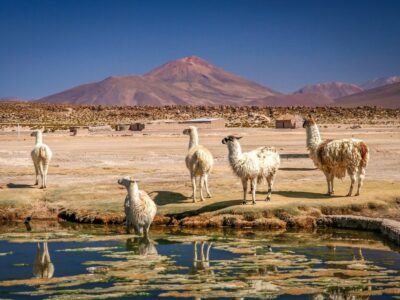
7 Thrilling Experiences in the Bolivian Altiplano: A Digital Nomad’s Dream
-

Unraveling the Mysteries of the Nasca Lines in Peru
-
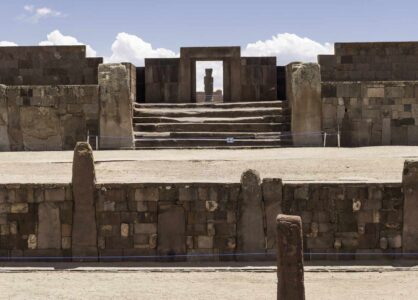
Unveiling the Mysteries of Tiwanaku: A Digital Nomad’s Guide to Bolivia’s Ancient Wonder
-
Unveiling the Hidden Gem: Gorham’s Cave Complex, Gibraltar
-
10 Compelling Reasons to Visit El Salvador
-
Discovering the Rich Tapestry of La Paz: History, Itinerary, Travel Tips, and More
-

The 10 Most Iconic Long-Distance Road Trips in the World
-
Top 10 Reasons to Visit Brazil: Discover the Beauty and Diversity of South America
-
Bogotá Unveiled: A 3-Day Adventure in Colombia’s Enigmatic Capital
-
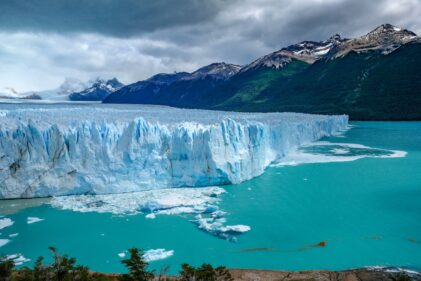
The Ultimate Guide to Campervan Touring in Patagonia
-
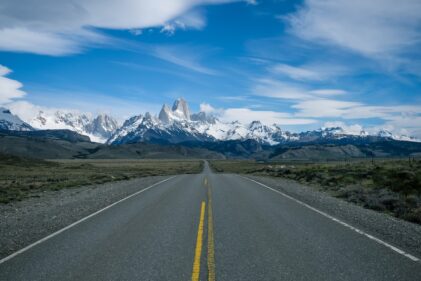
Epic Patagonia Road Trip: 5 Unforgettable Routes for Camper Van Enthusiasts
-
Top 10 Fascinating Reasons to Explore Argentina’s Rich Tapestry
-

Exploring the Charms of Montevideo: A Vibrant Journey into Uruguay’s Capital
-
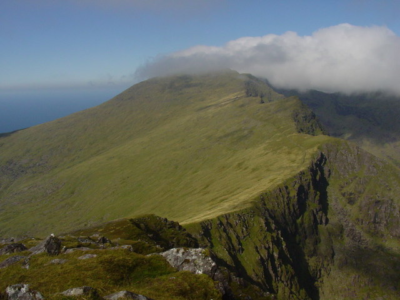
10 World’s Most Scenic Drives: Discover Breathtaking Landscapes on the Road
-
South America’s Hidden Treasures: 10 Spectacular Gems Waiting to be Discovered
-
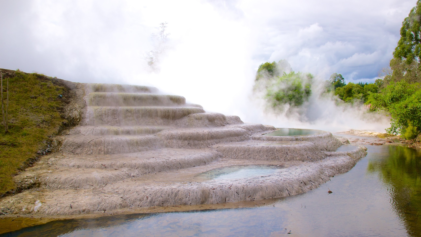
Cruising the Amazon: Wildlife and Wonder in South America
-
The 10 Most Impressive Archaeological Sites to Visit Around the World
-
10 Must-Visit Destinations for Nature Lovers
-

Satisfy Your Cravings: 5 Must-Visit Cities for Foodies
-
10 Compelling Reasons Why Chile Should Be Your Next Travel Destination
-
3 days in Lima: Unveiling the Enchanting Power and Cultural Richness of Peru’s Capital City
-

Rio de Janeiro: The Marvellous City
-
Why Buenos Aires Should Be Your Next Travel Destination
